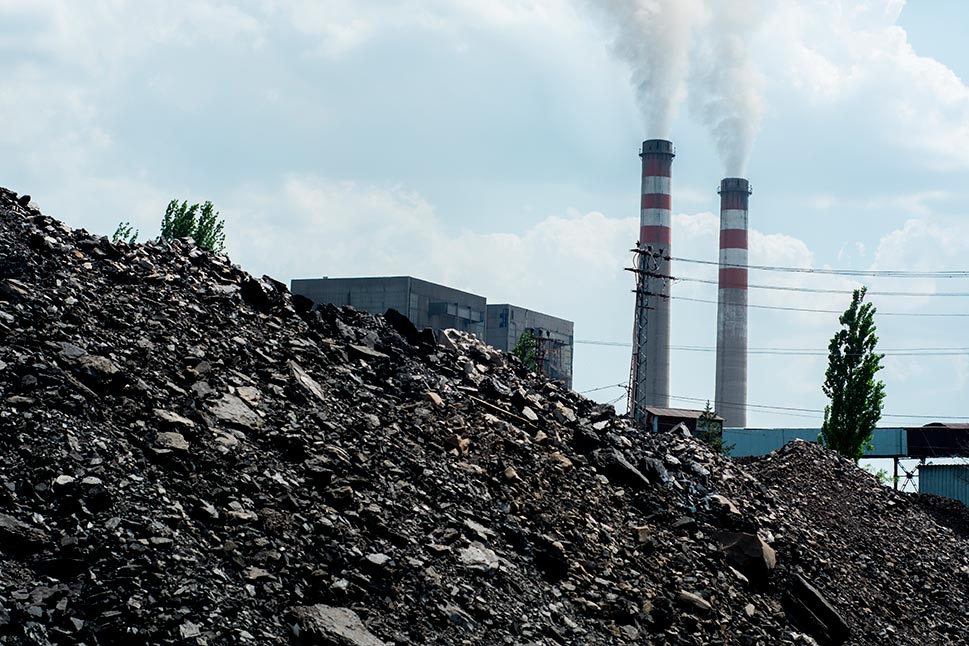Demand for coal is increasing because of the world’s growing appetite for energy. However, depletion of the highest-quality deposits and stricter emissions legislation mean that operators use lower-quality coal in more environmentally acceptable ways. Air Products' gasification processes are proven, efficient and reliable technologies. They convert a wide range of coal types to syngas that can be used:
- As an alternative feedstock for chemical manufacture (e.g., ammonia, methanol, olefins)
- To produce high-value, synthetic liquid fuels and lubricants
- To produce hydrogen
- To generate power through integrated gasification combined cycle (IGCC) processes, with lower emissions than from burning coal or even natural gas and a concentrated carbon dioxide stream for optional carbon capture and sequestration
Air Products offers the following coal gasification line-ups designed to meet varying business needs:
- The Air Products Dry-feed gasification process uses a proven reactor membrane wall and burner technology.
- The Air Products Slurry-feed gasification process uses a simple and easy-to-fabricate refractory-lined reactor.
In both process the hot syngas that is generated in the reactor needs to be cooled, which can be done in two different ways, using:
- A convective or radiant syngas cooler, which offers high thermal efficiency from high-quality steam production, making it suitable for world-scale chemical projects and IGCC power generation.
- A bottom water quench, which considerably reduces capital costs, enables shorter construction cycles and a quicker plant start-up and increases feedstock flexibility.
Proven coal gasification line-ups that are reliable and scalable
Dry-feed Process
In the dry-feed process, pulverized coal is transported pneumatically using an inert carrier gas into the gasifier, where it contacts oxygen and steam. To protect against the high gasification temperatures of up to 1600°C, a membrane wall that consists of high-pressure water/steam tubes is used. Multiple side burners and a proven swirl design allow efficient separation of the syngas from the slag. The slag flows down into a water bath, where it is extracted as a solid. The multiple burners provide the potential for easy scale-up.
The hot syngas that exits the gasifier is first quenched using ‘cold’ recycled syngas and then further cooled in an external convective cooler to generate high- and medium-pressure steam as valuable by-products. Alternatively, the hot syngas can also be cooled by direct contact with water in a bottom quench configuration.
Slurry-feed Process
In the slurry-feed process, the pulverized coal is mixed with water to form a slurry that is pumped into the gasifier via a single burner at the top of the reactor. Contact with oxygen starts the gasification reactions. In the slurry-feed process, the inside of the gasifier is lined with refractory bricks to protect against the high heat loads. The hot syngas and slag then pass through a quench water pool where molten solids are fused as slag and syngas is cooled while exiting the reactor.
In order to extract more useful heat from the hot syngas, a radiant syngas cooler can be applied directly at the exit of the gasifier such that the syngas is cooled and high-pressure steam is raised.
Air Products’ Turnkey Solutions
We offer these proven coal gasification line-ups either as fully Air Products-owned-and-operated syngas plants or in the form of a process license, where we can also support your project throughout its life cycle. We give customers peace of mind by providing operational support and business and project-execution services, including:
- Onsite syngas production
- Design and engineering
- Commissioning and start-up
- Experience transfer
- Master planning
- Advanced data analytics
- Training
- Technical service – retrofit/feed conversion
Why select Air Products gasification technology?
Unique and proven
Since the first coal gasifier using the Air Products Gasification Process began operating nearly 40 years ago, there are now more than 100 Air Products Gasification Process reactors operating or in the planning stages around the world. Many different coal types have been successfully processed, from highly reactive biomass and lignite to unreactive anthracites and petcoke. It is important, however, to select the proper line-up for each type of feed.
Air Products’ Dry-feed and Slurry-feed gasification processes with Convective or Radiant Syngas Cooler offer:
- Low coal consumption
- Low fresh water consumption and wastewater production
- High throughput and availability and low maintenance costs by using proven reactor membrane wall or refractory-lined wall and burner technology
- Higher thermal efficiency than other gasifiers
- High- and medium-pressure steam production, which can help reduce operating expenditures
Air Products' Dry-feed and Slurry-feed gasification processes with downstream Quench offer:
- Require 30-50% less capital expenditure and offers more stable operation through its simplified configuration
- Offer higher water content in syngas, which helps certain downstream chemical production processes
Reducing capital and operational costs
The multiple-burner design is easily scaled for larger units and is highly reliable, which eliminates the need to build a spare gasifier. Using larger units requires fewer operators, less maintenance and a smaller spare parts inventory. Units with a dry coal intake capacity of 3,200 t/d are already in operation.
Continuous design improvement
As an owner and operator and through close partnerships with other users, Air Products has the insight and experience to deliver. We record innovations and improvements in a lessons-learned database for the benefit of all licensees and to improve our master design. Focusing on continuous improvement through innovation and partnership helps us to achieve longer continuous runs and lower maintenance costs.
World-class support
Our global Air Products Gasification Technical Service Center provides process design, life-cycle support, simulation, and start-up assistance on the front end of projects. Long-term operational assistance, training, troubleshooting and spare parts are also offered as part of ongoing support to our customers. Lessons learned are shared through regular user meetings, as well as through global thought leadership conferences, where we seek to build user communities and accelerate learning. Ask us about our support services and arranging a site visit from some of our experts.
